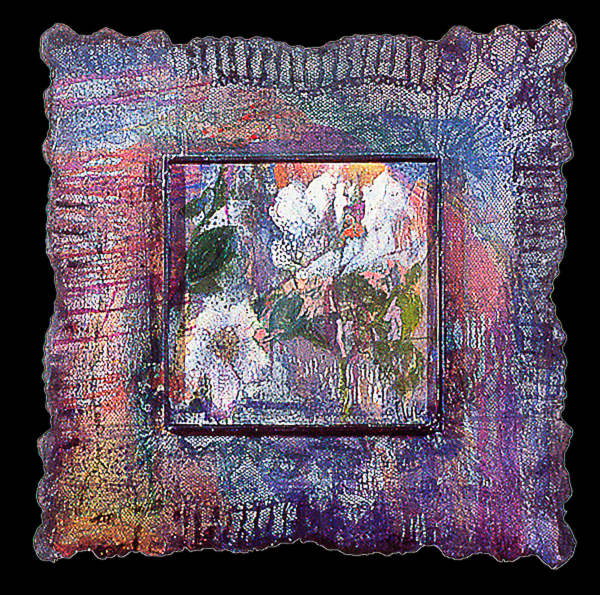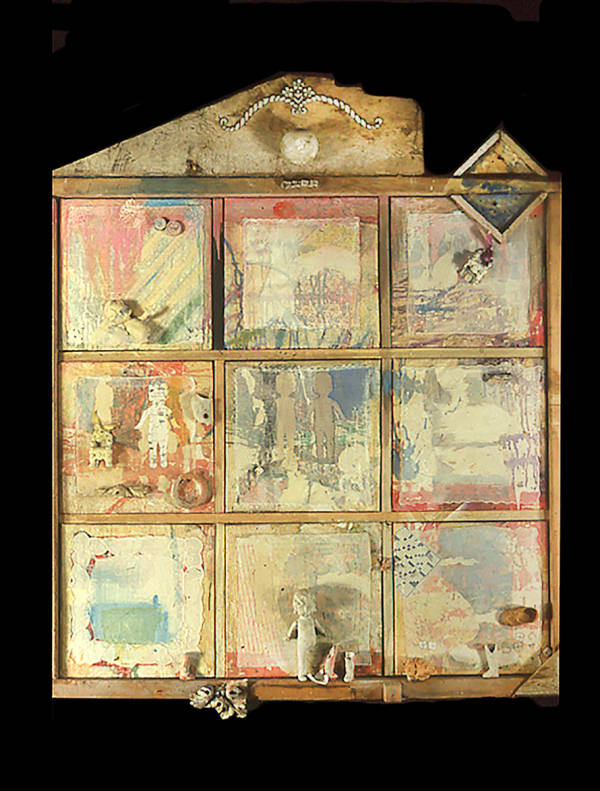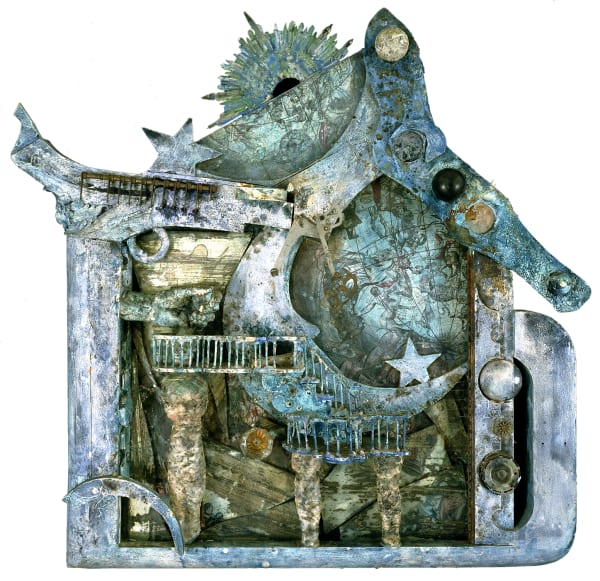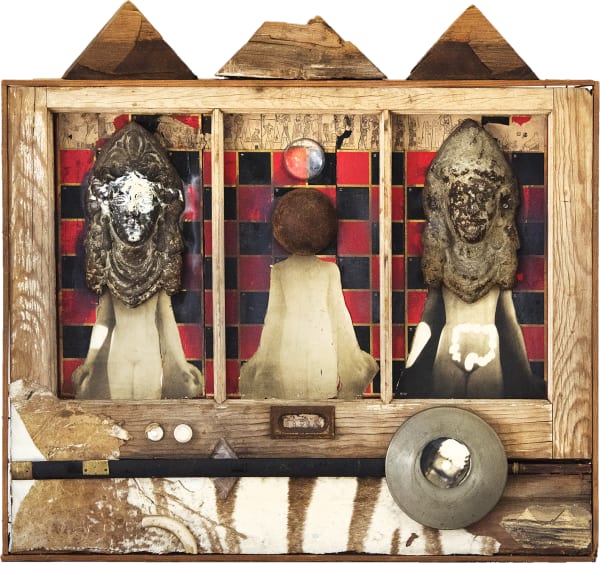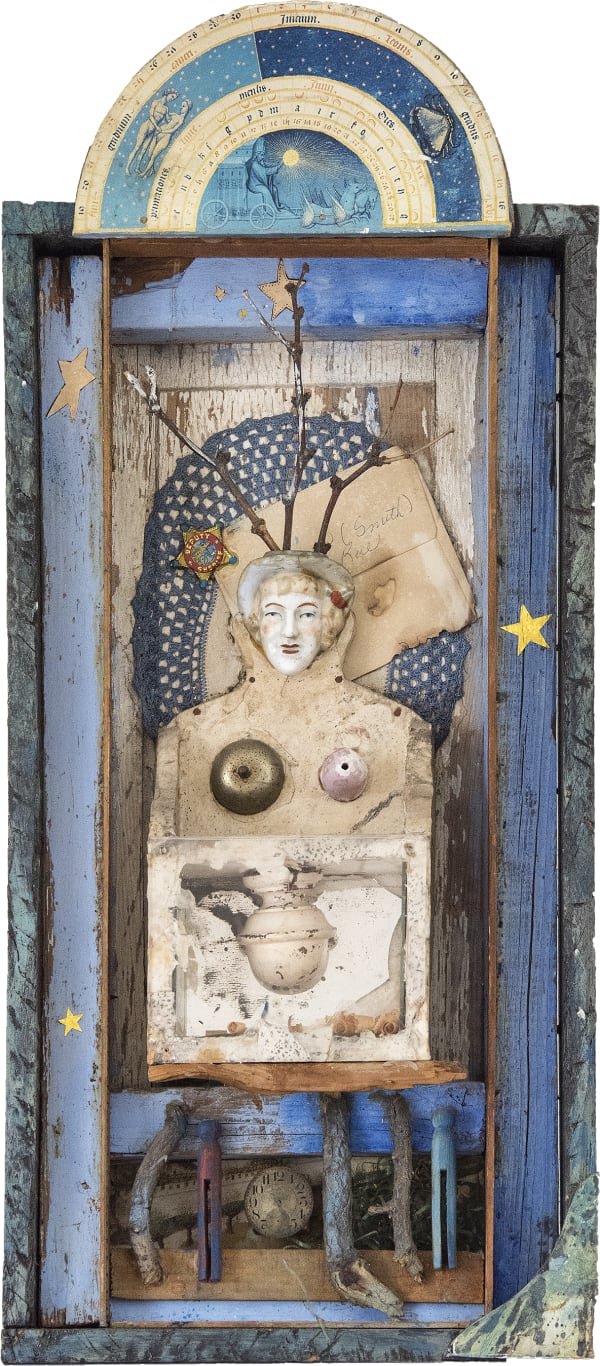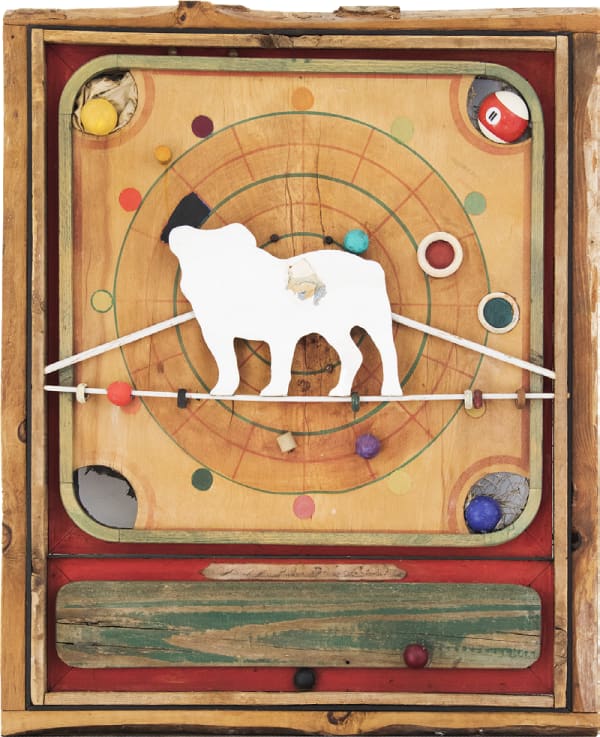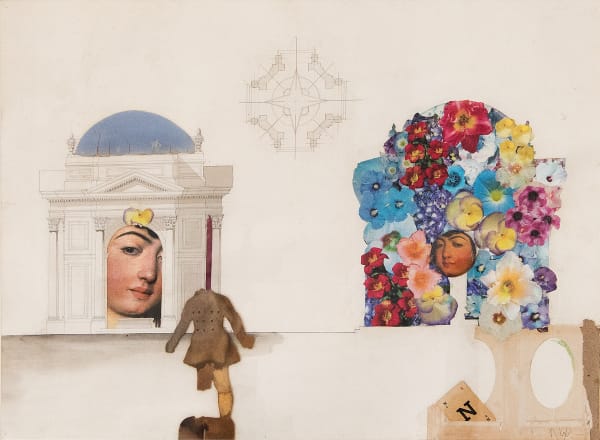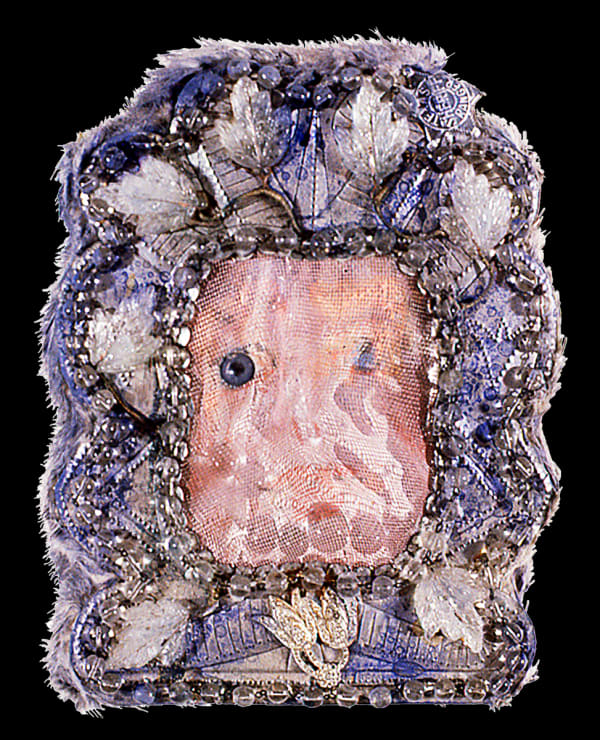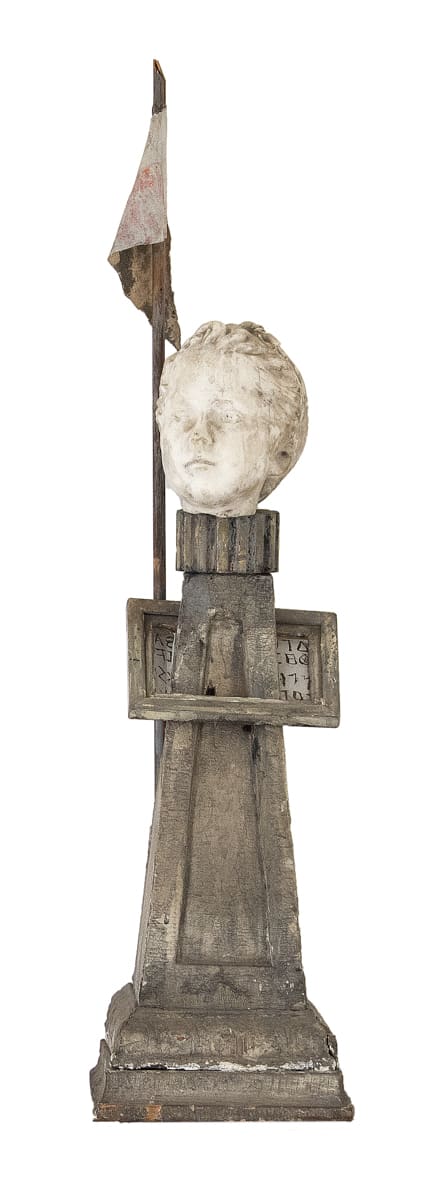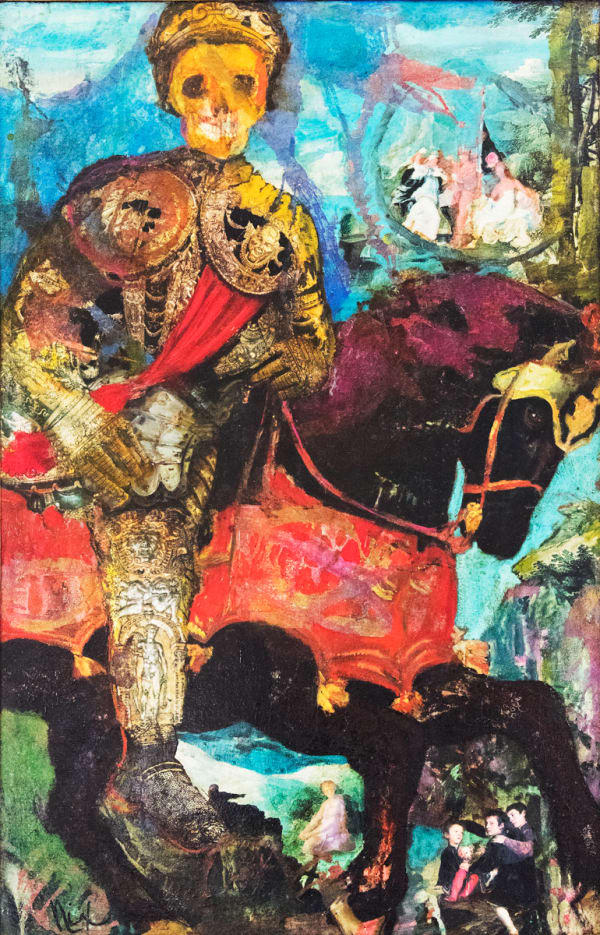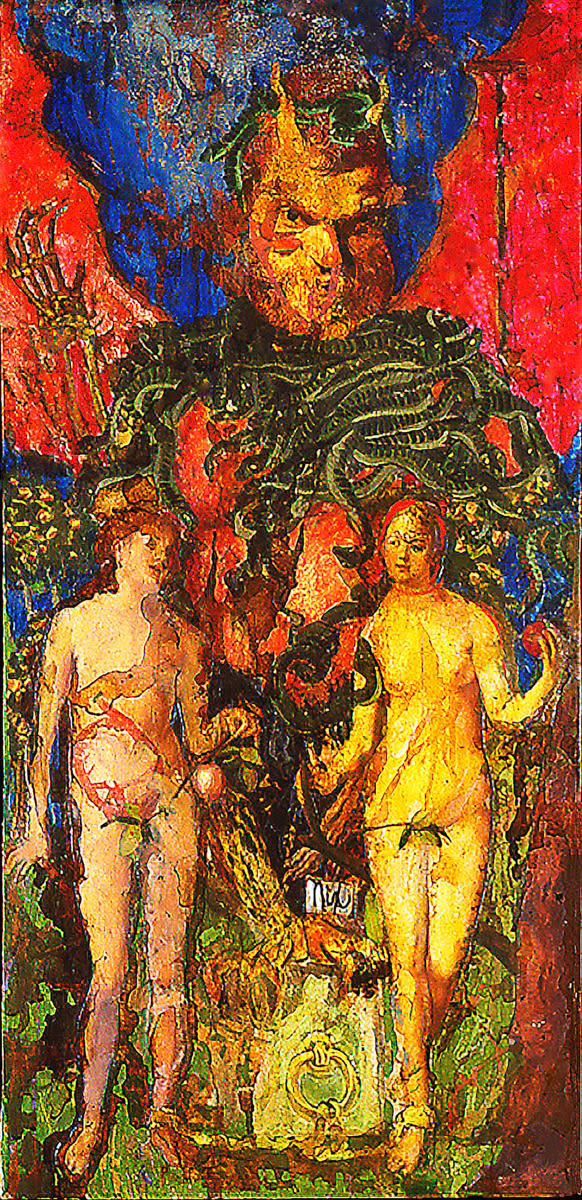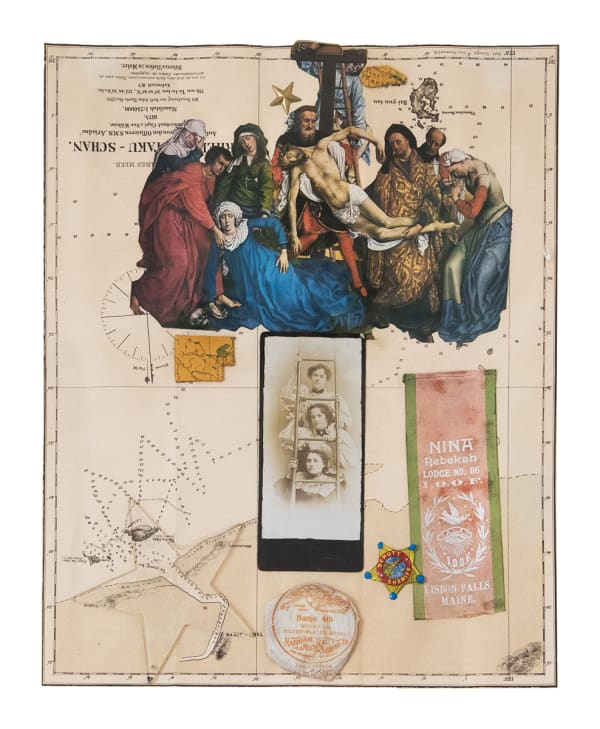The American Baroque and the Art of Patricia Nix
by Peter H. Davidson
Introducing: Times and Places
Reveries of time and place are recurring themes in the surrealist vocabulary of the 20th century this empowers the artist, Patricia Nix, as if by magic to take us by the hand and also by the eye down the haunting highways and byways of our collective unconscious. Our journey at an end or just beginning, we are privileged to ponder four delightful images, an aesthetic landscape of universal dimensions, all of a piece in the medium of printed collage variously entitled Leda and the Swan, Birth of Venus, Enigma, and Love Letters.
As in all art worth its keep, the artist challenges us to respond. But do we have the nerve to get into the game? If we do, the following questions must always be asked and answered: Where do we come from? Where are we going? How do we get there?
Our journey begins with Leda and the Swan.
We are asked to join this winsome couple on the wing over Yonkers, of all places. Suddenly we are immobilised by the great Heron that has planted itself in infinite space before us, like some disinterested Cerberus rescues us rather languorously from the abyss. Only now do we realise that we are not alone, having been joined in our journey by Frida Kahlo and a friend who seem right at home with us in this aerial playground.
Birth of Venus. Here we are miraculously on our way again, prompted, it would seem, by some universal intelligence and driven hence by the zephyrs of Botticelli. This time our destination or quest would seem to be the same artist's haunting evocation of eternal youth or even eternal life, supremely captured, as we are reminded here, by his figure from La Primavera of an everlasting spring. Again our reveries are interrupted, sensing as before that we are in the presence of other passengers whose fate we share: a child half hidden by a harp that smiles at us inviting, and a bird of prey that sits in timeless vigilance on a rose in Magritte-like clouds just outside our window.
In Enigma, we are momentarily brought to rest before the Eternal City, fittingly our only required stop along the way. As in all great cities, real or imagined, the enticements can be both cruel and erotic. The painting of a boy on a postage stamp torments a Great Dane with a bubble never launched or felt, while a monumental head last seen in the Sistine Chapel Hoats over the city like a great tattoo that will shortly come to rest invitingly on an upturned knee. Having engaged the scrutiny of postage stamps long enough, Michelangelo's Hand of God bids us resume our journey. Lest, like the gamekeeper in the foreground surrounded by his faithful hounds, we turn into a rose and all is lost.
Finally, in Love Letters we are home again. Our journey is over and we are left to our own devices. We are back in the real world, so to speak, where time and place are joined as they are here in a kind of Victorian romp that should bring us to our senses.
Suddenly we are reminded that we are as in real life not as voyeurs, but as protagonists vitally interested in the outcome. All of the players here are interchangeably us: the man on the horse, the head behind the dome, and the caryatid in the corner, inextricably linked as if by some vast magnetic field of thought and emotion, and the letters that often bear them. These are the thoughts and emotions that leap at us from the parapet like the banshees in question or bathe together like the monumental figures in the heavens beneath the dome in a kind of cosmic consciousness.
The artist defines our world and gives it meaning, reminding us, as Patricia Nix does here, that ours is not the classic world of the Greeks, but the modern world of the Baroque where the gods, like artists, live and play among us.
Peter H. Davidson is the director of the National Arts Heritage Foundation
 Patricia Nix, Rococo for Cockatoo, 2017
Patricia Nix, Rococo for Cockatoo, 2017 Patricia Nix, Procession of the Magi, 2016
Patricia Nix, Procession of the Magi, 2016 Patricia Nix, Magic Mountain, 2015 -2017
Patricia Nix, Magic Mountain, 2015 -2017 Patricia Nix, Chesapeake Bay Annunciation, 2015
Patricia Nix, Chesapeake Bay Annunciation, 2015 Patricia Nix, Cowboy, 2013
Patricia Nix, Cowboy, 2013 Patricia Nix, Nympheas Rouge, 1997
Patricia Nix, Nympheas Rouge, 1997 Patricia Nix, Eve's Orange, 1992
Patricia Nix, Eve's Orange, 1992 Patricia Nix, Baptism, 1991
Patricia Nix, Baptism, 1991 Patrica Nix, Handkerchief Rack for John Peto, 1989
Patrica Nix, Handkerchief Rack for John Peto, 1989 Patrica Nix, Through A Glass Darkly, 1989
Patrica Nix, Through A Glass Darkly, 1989 Patricia Nix, Dominoes, 1988
Patricia Nix, Dominoes, 1988 Handkerchief Variation #16 (Block Party), 1987
Handkerchief Variation #16 (Block Party), 1987 Patricia Nix, Francis Roscoe , 1985-92
Patricia Nix, Francis Roscoe , 1985-92 Patricia Nix, Handkerchief Spat in the playroom, 1985
Patricia Nix, Handkerchief Spat in the playroom, 1985 Patricia Nix, Fat Girl, 1984
Patricia Nix, Fat Girl, 1984 Patricia Nix, Jack of Diamonds Rides a Yellow Bird, 1984
Patricia Nix, Jack of Diamonds Rides a Yellow Bird, 1984 Patrica Nix, King of Clubs, 1984
Patrica Nix, King of Clubs, 1984 Patrica Nix, Queen of Diamonds Rides a White Horse, 1984
Patrica Nix, Queen of Diamonds Rides a White Horse, 1984 Patricia Nix, Stairway to the Stars , 1984
Patricia Nix, Stairway to the Stars , 1984 Patrica Nix, Tarot Card: Jack of Cups, 1984
Patrica Nix, Tarot Card: Jack of Cups, 1984 Patricia Nix, Anatomy of Lower Egypt, 1983
Patricia Nix, Anatomy of Lower Egypt, 1983 Patrica Nix, Voile, 1983
Patrica Nix, Voile, 1983 Patricia Nix, Magico, 1982
Patricia Nix, Magico, 1982 Patricia Nix, Trumpeteers, 1980
Patricia Nix, Trumpeteers, 1980 Patricia Nix, Beauty and the Beast, 1979
Patricia Nix, Beauty and the Beast, 1979 Patricia Nix, Mother & Child, 1979
Patricia Nix, Mother & Child, 1979 Patricia Nix, Sterilizer, 1979
Patricia Nix, Sterilizer, 1979 Patricia Nix, Toy Shop, 1979
Patricia Nix, Toy Shop, 1979 Patricia Nix, Bulldog on a Tigh Rope, 1978
Patricia Nix, Bulldog on a Tigh Rope, 1978 Patrica Nix, Elizabeth with Armada
Patrica Nix, Elizabeth with Armada Patrica Nix, Hanged Man
Patrica Nix, Hanged Man Patrica Nix, Adam & Eve
Patrica Nix, Adam & Eve Patricia Nix, Ann Boelyn with Carved Apple Frame
Patricia Nix, Ann Boelyn with Carved Apple Frame Patricia Nix, At the Window
Patricia Nix, At the Window Patricia Nix, Circus
Patricia Nix, Circus Patrica Nix, Circus
Patrica Nix, Circus Patrica Nix, Circus Maximus small
Patrica Nix, Circus Maximus small Patricia Nix, Double Jeopardy
Patricia Nix, Double Jeopardy Double Jeopardy
Double Jeopardy Patricia Nix, Eve's Apple
Patricia Nix, Eve's Apple Patrica Nix, Evening Star
Patrica Nix, Evening Star Patrica Nix, Feast of the Rose Garlands(Mary Queen of Scotts)
Patrica Nix, Feast of the Rose Garlands(Mary Queen of Scotts) Patrica Nix, Gal Baby
Patrica Nix, Gal Baby Patrica Nix, Handkerchief Variation 13
Patrica Nix, Handkerchief Variation 13 Patrica Nix, Handkerchief Variation 14
Patrica Nix, Handkerchief Variation 14 Patrica Nix, Leda and the Swan
Patrica Nix, Leda and the Swan Patricia Nix, Morning Pond
Patricia Nix, Morning Pond Patrica Nix, Mother Love
Patrica Nix, Mother Love PatricaNix, Nympheas Rough
PatricaNix, Nympheas Rough Patrica Nix, Orchids
Patrica Nix, Orchids Patricia Nix, Patricia Nix Monograph
Patricia Nix, Patricia Nix Monograph Patricia Nix, People With Heads are Rare
Patricia Nix, People With Heads are Rare Patrica Nix, Pink Violin
Patrica Nix, Pink Violin Patrica Nix, Pointer
Patrica Nix, Pointer Patrica Nix, Queen of Batons
Patrica Nix, Queen of Batons Patricia Nix, Rape of the Sabine Women
Patricia Nix, Rape of the Sabine Women Patrica Nix, Red Henry
Patrica Nix, Red Henry Patrica Nix, Remembrance I
Patrica Nix, Remembrance I Patrica Nix, Sam Houston at The Battle of San Jacinto
Patrica Nix, Sam Houston at The Battle of San Jacinto Patrica Nix, Snow Queen
Patrica Nix, Snow Queen Patrica Nix, Sonata
Patrica Nix, Sonata Patrica Nix, Spectators at the Crucifixion
Patrica Nix, Spectators at the Crucifixion Patrica Nix, Spirit Catcher
Patrica Nix, Spirit Catcher Patrica Nix, St Sebastian
Patrica Nix, St Sebastian Patrica Nix, Sunflower Studies 2
Patrica Nix, Sunflower Studies 2 Patrica Nix, Sunflowers
Patrica Nix, Sunflowers Patrica Nix, Surrender
Patrica Nix, Surrender Patrica Nix, Sweet Mystery
Patrica Nix, Sweet Mystery Patrica Nix, Tarot Card: Death
Patrica Nix, Tarot Card: Death Patrica Nix, Tarot Card: Le Soleil
Patrica Nix, Tarot Card: Le Soleil Patrica Nix, Texas Landscape
Patrica Nix, Texas Landscape Patrica Nix, The Devil (edit)
Patrica Nix, The Devil (edit) Patrica Nix, The Fool
Patrica Nix, The Fool Patrica Nix, The Hermit (Argus)
Patrica Nix, The Hermit (Argus) Patrica Nix, The Last Judgment
Patrica Nix, The Last Judgment Patrica Nix, The Moon
Patrica Nix, The Moon Patrica Nix, The Night Uncle Aubrey Met Jesus
Patrica Nix, The Night Uncle Aubrey Met Jesus Patrica Nix, The Star Tarot
Patrica Nix, The Star Tarot Patrica Nix, The Temptation of Saint Anthony
Patrica Nix, The Temptation of Saint Anthony Patrica Nix, Three Graces
Patrica Nix, Three Graces











